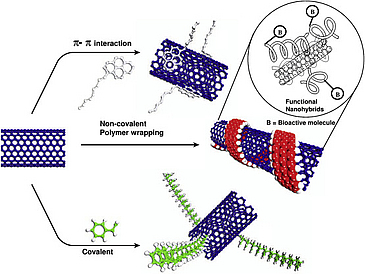Leoni A. Kunz-Schughart, Anna Dubrovska, Claudia Peitzsch, Alexander Ewe, Achim Aigner, Samuel Schellenburg, Michael H. Muders, Silke Hampel, Giuseppe Cirillo, Francesca Iemma, Rainer Tietze, Christoph Alexiou, Holger Stephan, Kristof Zarschler, Orazio Vittorio, Maria Kavallaris, Wolfgang J. Parak, Lutz Mädler and Suman Pokhrel.
Biomaterials (2017) 120, 155-184
http://dx.doi.org/10.1016/j.biomaterials.2016.12.010
Cancer is one of the leading non-communicable diseases with highest mortality rates worldwide. About
half of all cancer patients receive radiation treatment in the course of their disease. However, treatment
outcome and curative potential of radiotherapy is often impeded by genetically and/or environmentally
driven mechanisms of tumor radioresistance and normal tissue radiotoxicity. While nanomedicine-based
tools for imaging, dosimetry and treatment are potential keys to the improvement of therapeutic efficacy and reducing side effects, radiotherapy is an established technique to eradicate the tumor cells. In order to progress the introduction of nanoparticles in radiooncology, due to the highly interdisciplinary nature, expertise in chemistry, radiobiology and translational research is needed. In this report recent insights and promising policies to design nanotechnology-based therapeutics for tumor radiosensitization will be discussed. An attempt is made to cover the entire field from preclinical development to clinical studies. Hence, this report illustrates (1) the radio- and tumor-biological rationales for combining nanostructures with radiotherapy, (2) tumor-site targeting strategies and mechanisms of cellular uptake, (3) biological response hypotheses for new nanomaterials of interest, and (4) challenges to translate the research findings into clinical trials.


